or other shortwave receivers
my goal for this work:
In april 2014 in the german magazine "FUNKAMATEUR" was published an article from
DC8RI for nice receive converters in 3 versions for 6m, 4m and 2m.
In april 2015 the converters can be found as KIT in the "FUNKAMATEUR online shop".
I decided to buy the 4m-version. An analysis of the circuit showed me that it must be possible
to modify the circuit to make a combined 4m and 6m receive converter
for the use with my SDR-IQ which has a RX range from 0-30MHz.
So it will also work with other shortwave receivers.
I decided to use an LO frequency of 42MHz. This LO frequency is
also availiable in the shop. This gives me the possibility to use both bands
with the SDR-IQ without band switching.
The 6m Band 50-52 MHz can be received from 8-10 MHz.
The 4m Band 70-72 MHz can be received from 28-30 MHz.
To get the needed receiving performance and selectivity the filters
of the converter have to be modified.
So I started my work with the "Elsie Filter Designer".
For the input bandpass filter I used the following components:
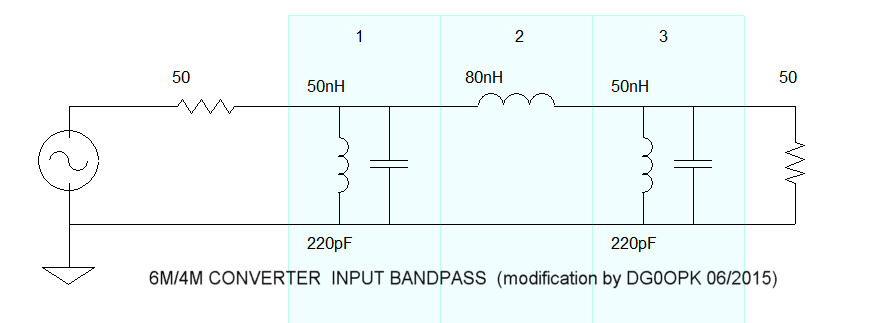
The simulation gave the following results.
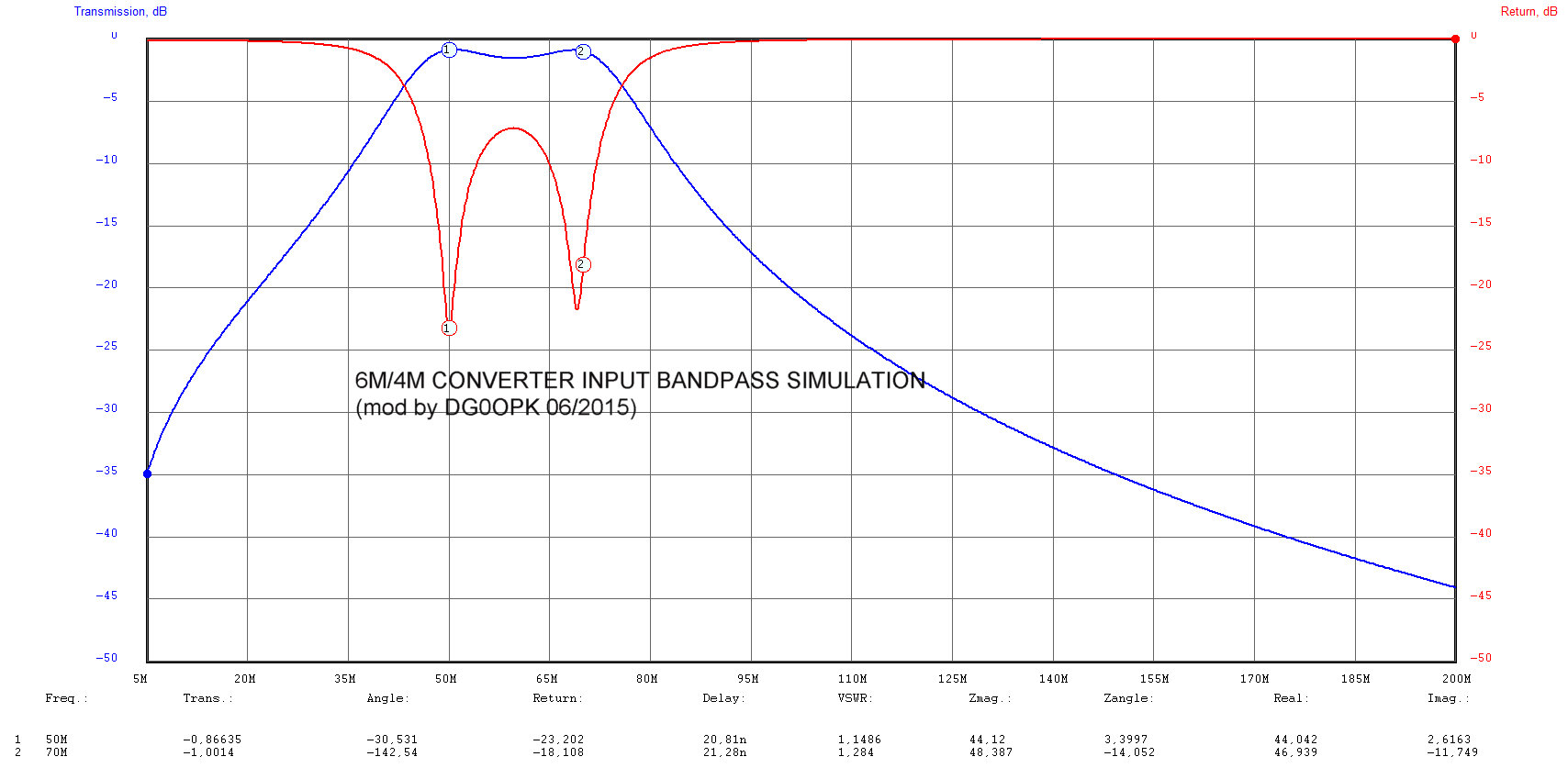
The main bandpass modification looks like this.

and the simulation results of the main bandpass filter ...
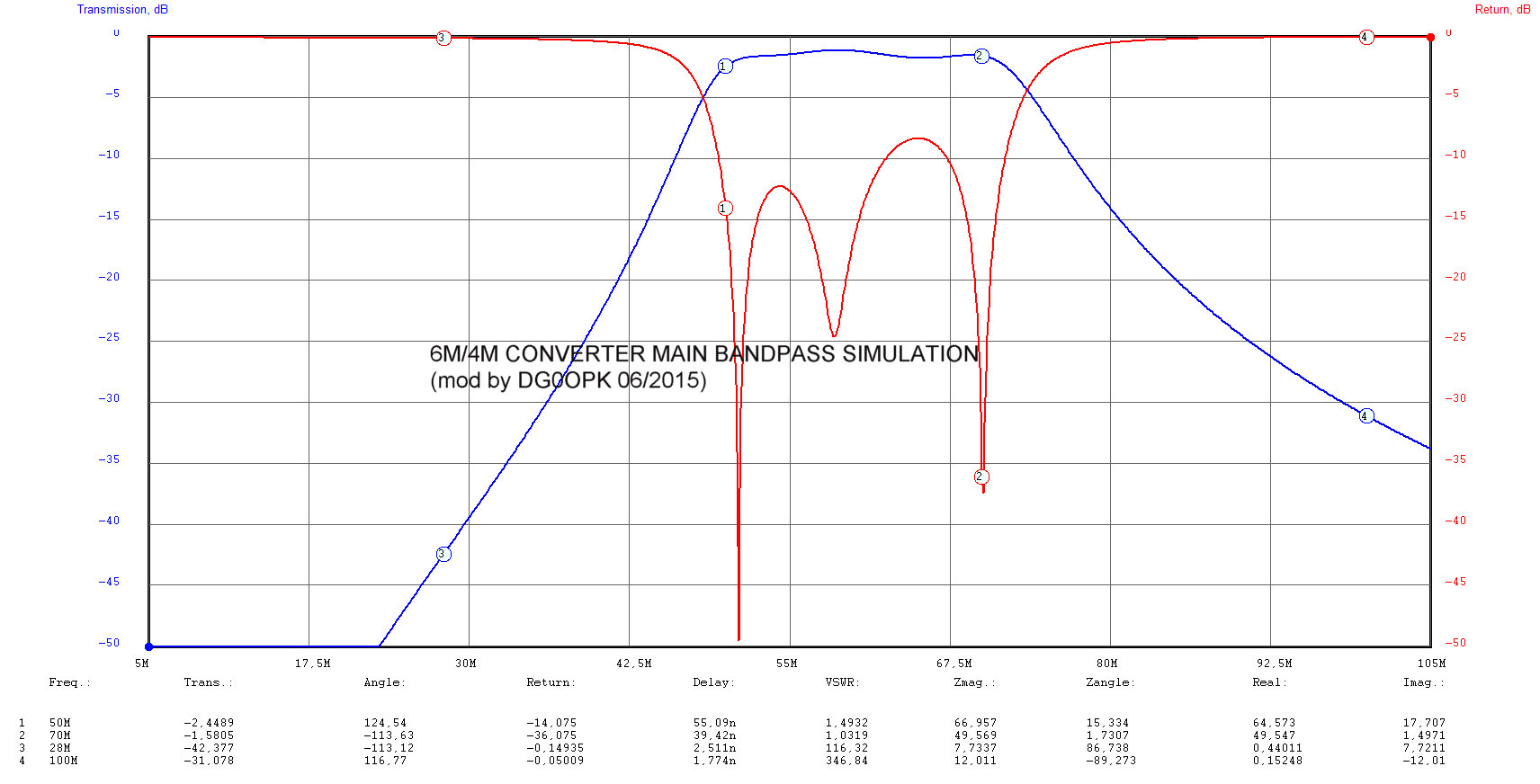
and finally the LO filter must be modified ....
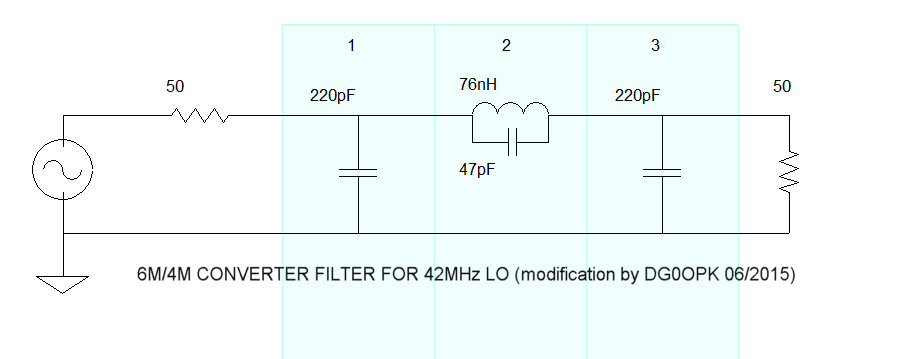
and the simulation with a deep pole on 84MHz (1st LO harmonic).

The modified circuits and components can now be seen on the PCB.
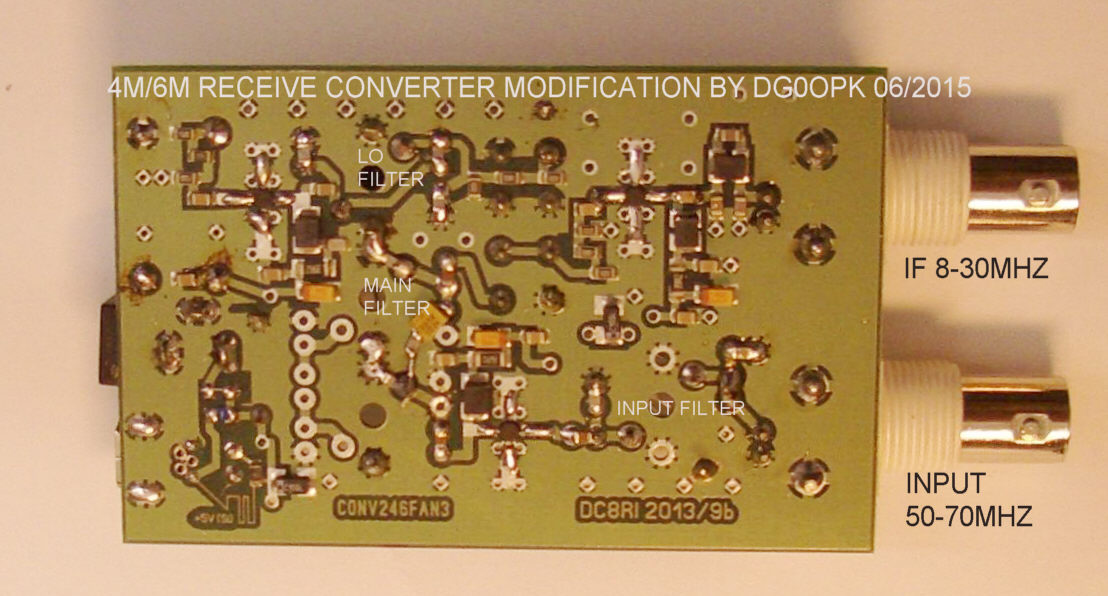

Note: change C7,C13 and C13 also to a bigger value... i used 1.5nF
Measurement results:
After all modifications I got the following measurement results with an RF input power of -50dBm.
| receive frequency
(-50dBm) |
if frequency |
level |
gain
|
image rejection |
| 50 MHz |
8 MHz |
-27dBm |
23 dB |
--- |
| 60 MHz |
18 MHz |
-30 dBm |
20 dB |
--- |
| 70 MHZ |
28MHz |
-26 dBm |
24 dB |
--- |
| 34 MHz (image frequency) |
8 MHz |
-78 dBm |
-28 dB |
51 dB |
| 24 MHz (image frequency) |
18 MHz |
-90 dBm |
-40 dB |
60 dB |
| 14 MHz (image frequency) |
28 MHz |
-102 dBm |
-52 dB |
76 dB |
After a first "real world" test all is working well.
If you
need more information please write an email

last change: 11.june 2015 (DG0OPK)